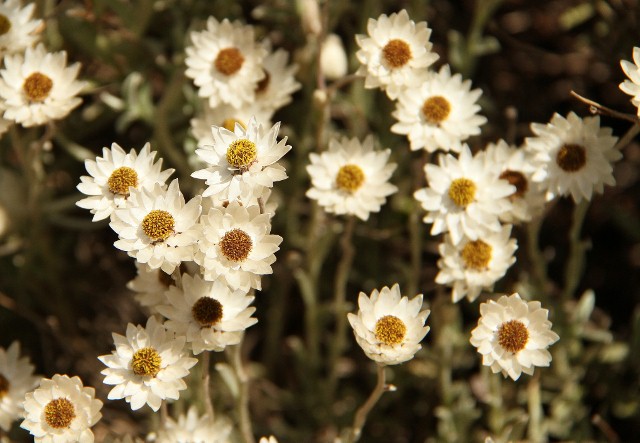Terracotta Gazania Gazania krebsiana (Gousblom, Botterblom, Rooi Gazania)
Order Asterales. Family: Asteraceae
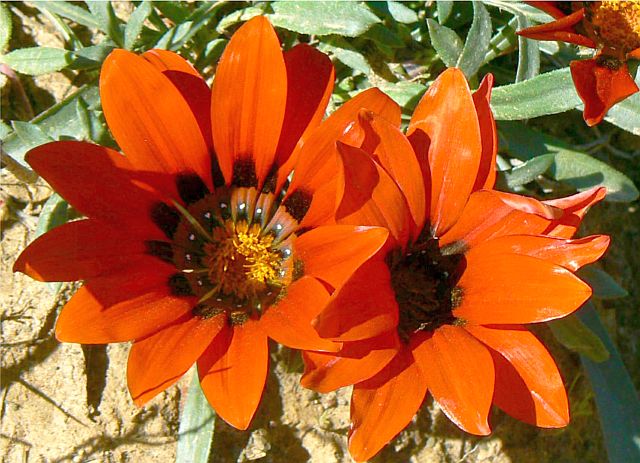
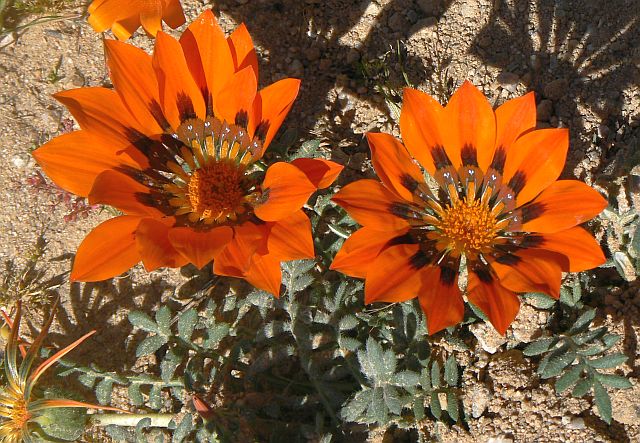
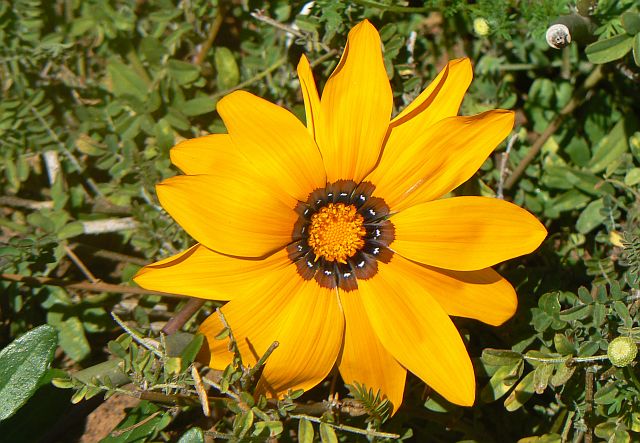
Addo Elephant National Park
Description
Gazania krebsiana, previously known as
Gazania pavonia, is an extremely showy plant when in flower largely due to its warm and bright flower colour, flower size and its extended flowering period. The plants are semi-decumbent (prostrate to ascending), perennial and herbaceous and reach about 150 mm high. They are therefor aptly referred to as tufted groundcovers and many individuals together may give a rather mat-like appearance, a sight that is all too beautiful when in bloom. Individually they form rounded tufts on the ground of about 200 mm across with very distinctive foliage. The root system of G. krebsiana is fairly weak and consists of a series of adventitious roots. There is no definite main or taproot meaning the adventitious roots are quite shallow, only about 250 mm deep. This is one of the reasons why these plants react so well to rain and are therefore regarded as excellent pioneer plants.
Leaves and flower stalkThe leaves may vary in shape especially when young. Mature leaves are usually compound and divided into small, narrow, regular lobes of about 4-6 on each side. They are rough to the touch, dark shiny green on the upper side and woolly white underneath. The main vein is brownish and prominent on the underside. The leaf, including the petiole (leafstalk), can reach a length of 170 mm. Leaves are closely spaced on the short shoots. A distinctive characteristic of Gazania is that the flowering stalks contain a milky sap.
Flowerheads measure 50-60(-90) mm in diameter. The upper side of the ray florets (the florets at the margin of a flowerhead in the Asteraceae) is mainly a magnificent dark red or orange, with dark brown markings on the lower quarter. In some literature the flower colour is referred to as terracotta, hence the common name, terracotta gazania. The dark brown markings may contain black or white spots, adding more eloquence to the flowers.
Gazania krebsiana flowers from August till January reaching a peak in October and November.
Each flowerhead contains about 25 fruits, ± 5 x 1mm. Each fruit is equipped with silky hairs that enable it to be easily dispersed by the wind. The seeds start maturing from October and ants may be seen carrying them away into their underground tunnels.
Taxonomy
3 subspecies are recognised:
G. krebsiana subsp. arctotoides,
G. krebsiana subsp. krebsiana and
G. krebsiana subsp. serrulata. The Biedouwvallei and Pakhuis Pass in the Cape present striking displays of blood-red
G. krebsiana subsp. arctotoides after good autumn rains, this subspecies occurring widely through the Cape, Free State, Natal, Lesotho, and in Namibia.
Distribution
Gazania krebsiana has a very wide distribution range and is virtually found in all provinces of South Africa from Namaqualand in the west to the Eastern Cape and KwaZulu-Natal in the east. Northward it extends into the drier interior of the Great Karoo, the Free State and then into some parts of the summer rainfall regions of Gauteng and the Lowveld.
Habitat
Succulent Karoo. Mainly within the winter rainfall region of South Africa. Plants and adaptable and flourish in a host of habitats but are mostly found along roadsides, on flats or lower slopes, exposed hills and rocky outcrops and stony ridges. The latter two habitats are especially ideal in the Namaqualand region of the country. To a lesser extent they may well be found in grassy situations, in montane vegetation and in coastal dune vegetation which is commonly referred to as Strandveld (seaside plants) in the west to south, and thicket in the east. Associated vegetation types include Succulent Karoo, Nama Karoo, Fynbos, Dry Valley Bushveld and Grasslands. Plants seem to tolerate a number of soil types but have a noticeable preference for clay and sandy soil.
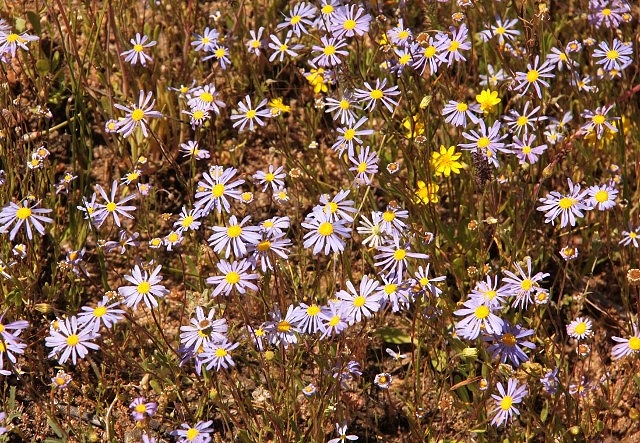








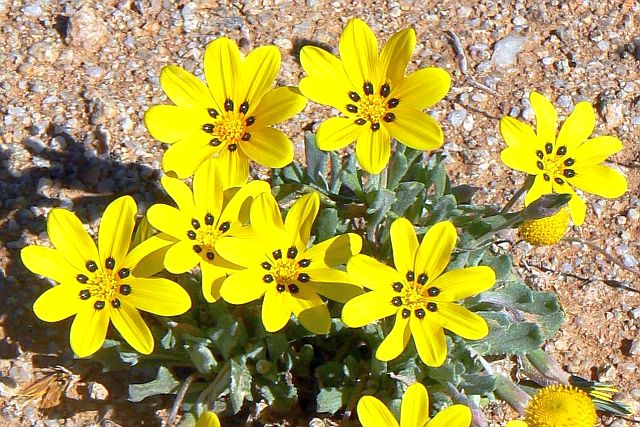

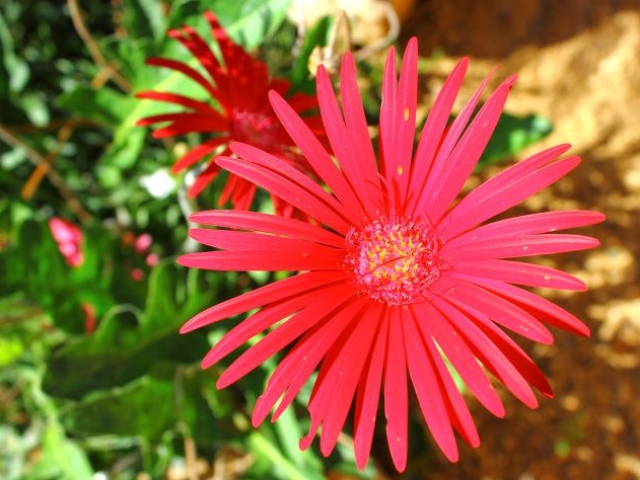
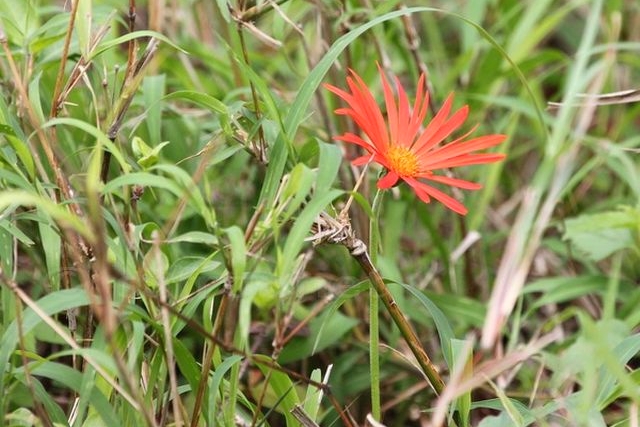 © nan
© nan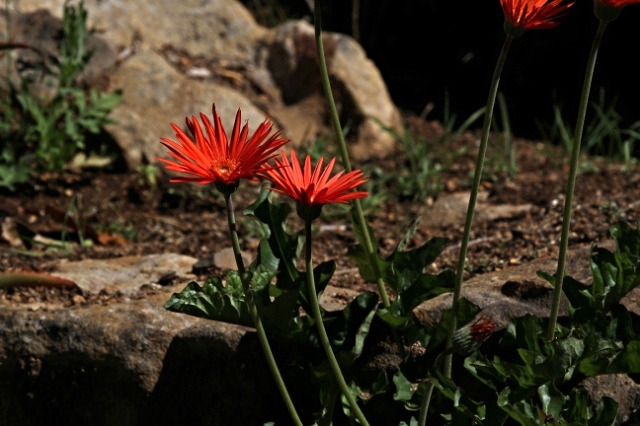 © Tina
© Tina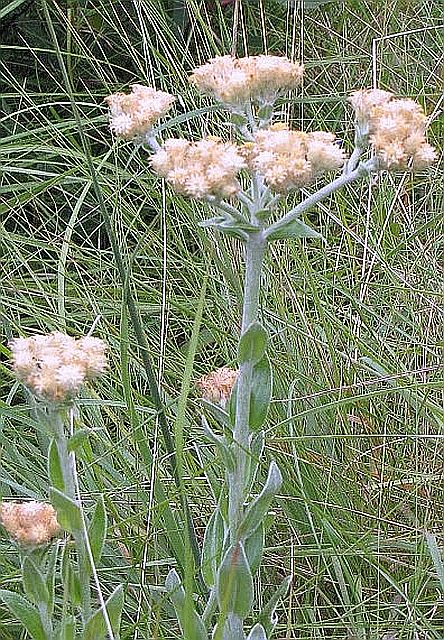 © Lisbeth
© Lisbeth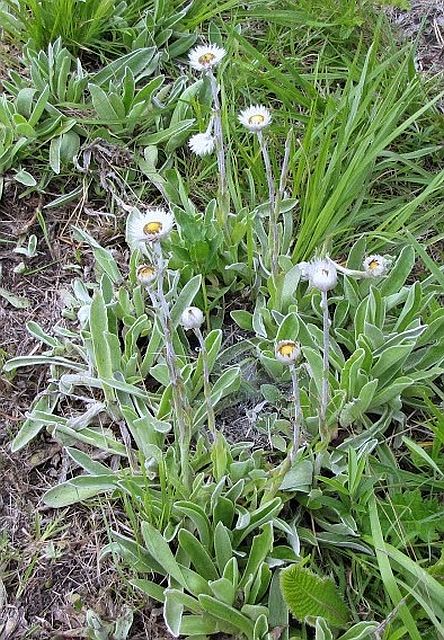 © Lisbeth
© Lisbeth
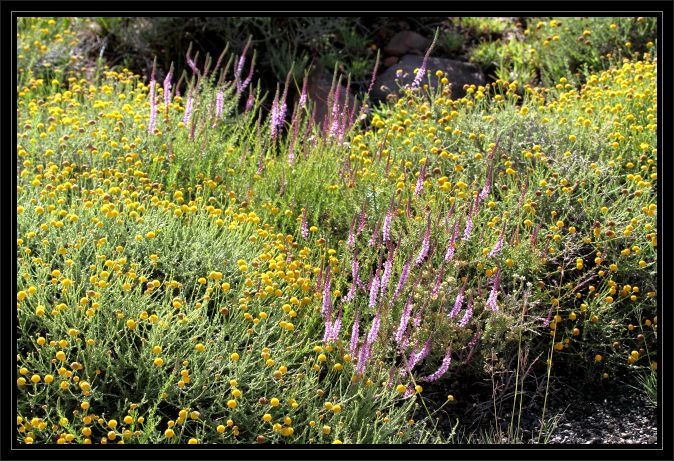 © Sharifa
© Sharifa